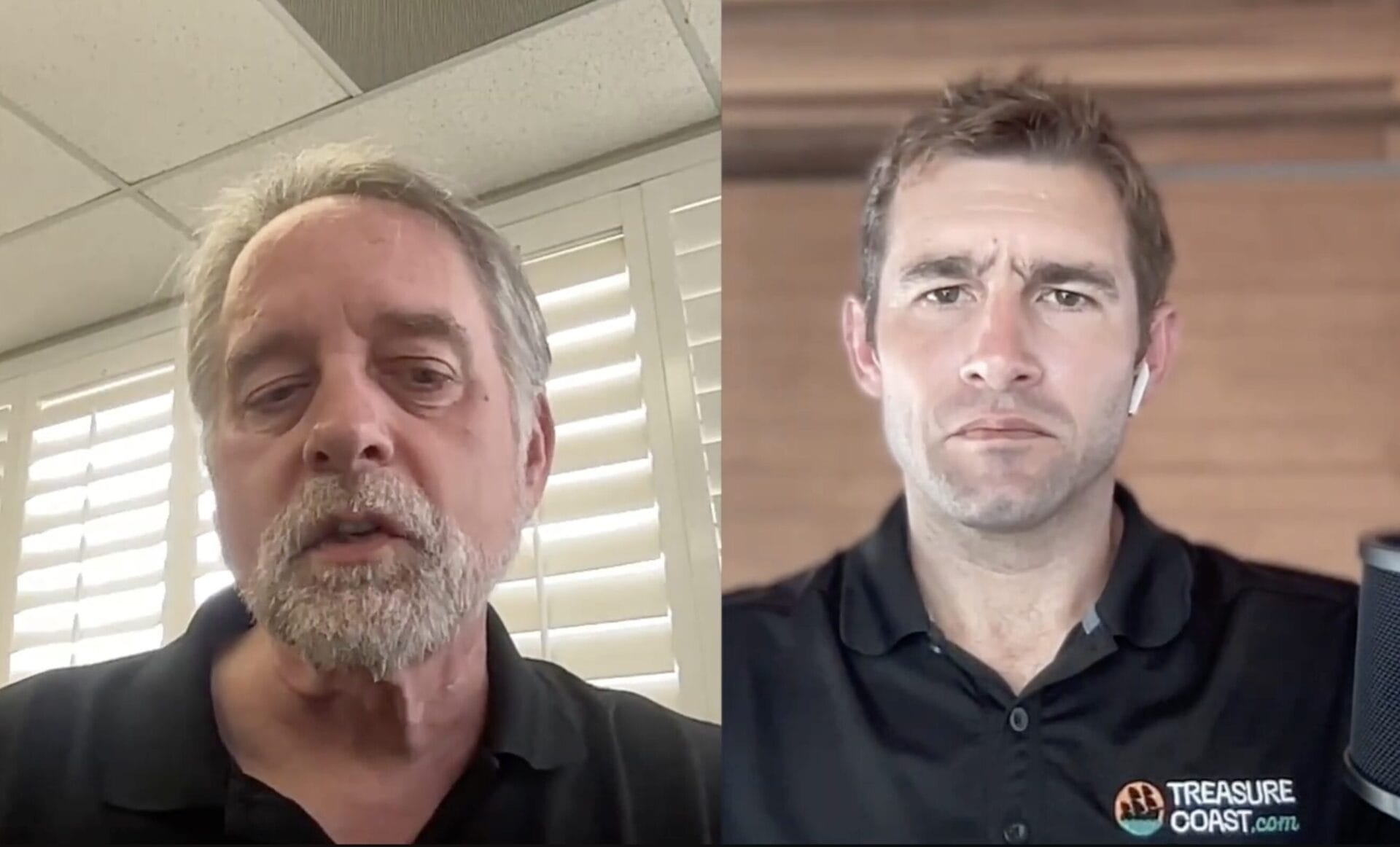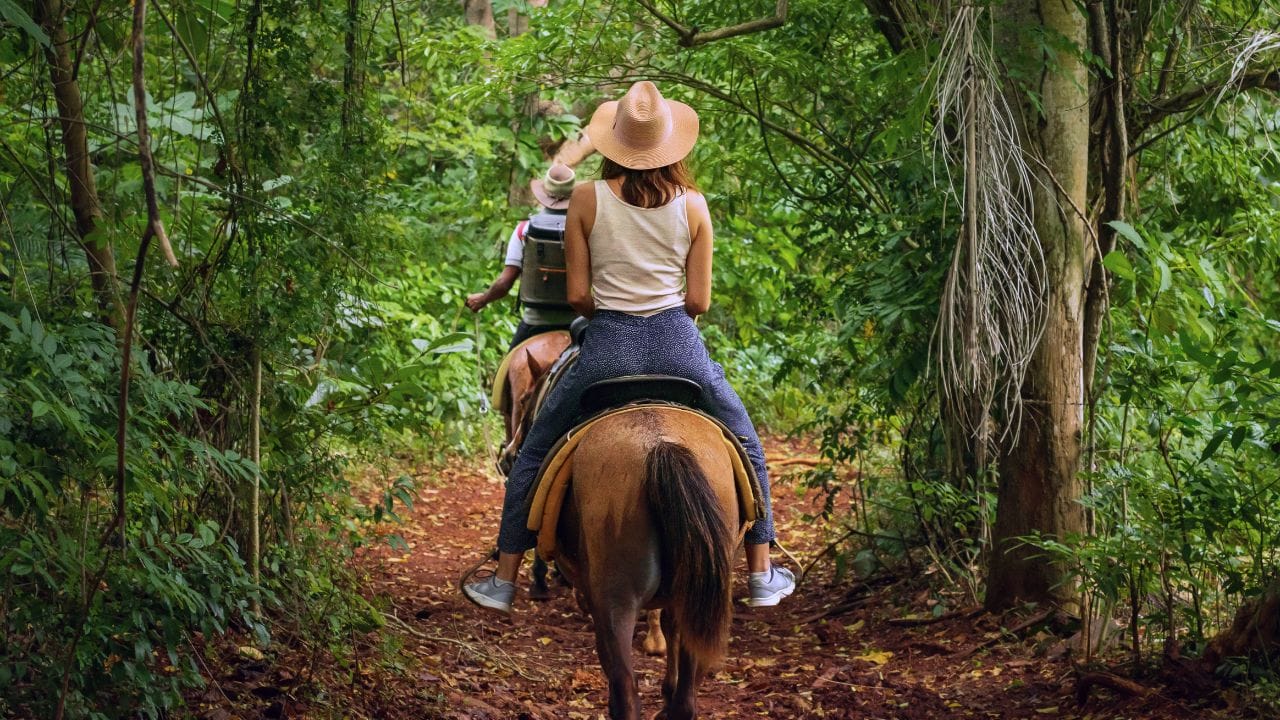In the latest episode of The Current by TreasureCoast.com, we sit down with Capt. Mike Holliday, a local fishing guide and the Outreach & Engagement Manager for Captains for Clean Water. What unfolds is a bold and eye-opening conversation about the environmental changes Holliday has seen over the decades — and the fight to restore what’s been lost here on the Treasure Coast.

Holliday has lived on the Treasure Coast since 1978, and he’s been guiding fishing tours since 1986. Over the years, he’s held positions as a magazine editor and marketing director for outdoor companies. But nothing has impacted him more than watching the slow destruction of the waterways he’s built his life around.
“I never thought I’d be an activist,” Holliday says. “But when something affects your way of life so deeply, you either leave — or you fight.”
He chose to fight.
The Story of a Broken System
To understand Holliday’s mission, you have to understand the history. Originally, Lake Okeechobee overflowed south into the Everglades in a broad, slow-moving sheet of freshwater. That water naturally cleaned itself as it passed through what was once called the “River of Grass” — a crucial filtration system that fed the Everglades and balanced the salt levels in Florida Bay.
But in the 1940s, the federal government diked Lake Okeechobee and created the Everglades Agricultural Area (EAA), a 650,000-acre region dominated by the sugar industry. Since then, the water has been redirected east and west through manmade canals — including into the St. Lucie River, which historically never received freshwater from the lake.
A Watershed in Decline
Holliday paints a vivid picture of what’s been lost: seagrass meadows that used to stretch for miles are now lifeless sand. Oyster bars are buried in muck. And once-clear sandbars now turn brown during outgoing tides.
And that’s just the visible damage. “We’re talking about pesticides, herbicides, nitrogen, phosphorus — all flowing into our estuaries,” Holliday warns. “We swim in it. Our kids swim in it. We eat from it. And it’s not supposed to be this way.”
The discharges — often in the hundreds of millions of gallons per day — can last for months at a time. That’s where the real damage happens. The longer the freshwater pushes into saltwater ecosystems, the more marine life dies.
Captains for Clean Water & the Power of Social Media
Captains for Clean Water was born from frustration — frustration that despite knowing the solutions for decades, no meaningful action was happening.
Their edge? Boldness and social media.
“They were one of the first groups to actually influence policy through social media,” Holliday explains. “They brought honest, fact-based talking points straight to the public and built a huge base of supporters.”
When bad bills arise, Captains for Clean Water mobilizes tens of thousands to petition lawmakers. Their strength lies in numbers — and the clarity of their mission.
Restoration Projects
Among the 68 Everglades restoration projects originally proposed, the EAA Reservoir is the most important. It’s being built south of Lake Okeechobee to capture and clean water before it heads south rather than being dumped into the coasts.
“It could cut discharges to our coast by 50 to 60%,” Holliday says. “And the lake management is already starting to change to keep the lake lower — which protects seagrasses, both in the lake and in our estuaries.”
The catch? The project is still underfunded and years from completion.
Special Interests and Delays
While Captains for Clean Water is non-political, Holliday doesn’t shy away from calling out the role of special interests. “The sugar industry has enormous influence,” he says. “They want the lake high so they have water security. But that comes at the cost of our rivers and estuaries.”
Funds meant for restoration often get diverted to less effective, or even counterproductive, projects. “Everyone knows the solution is to send water south,” Holliday says. “So why aren’t we doing it?”
What Can You Do?
The good news, according to Holliday, is that nature is resilient — and so is the local community. “If we stop sending this water into our habitats, if we clean the water before it gets there, we can get it back. And it won’t take long.”
He urges anyone who cares about the Treasure Coast to get involved by following Captains for Clean Water on social media and signing up for their email alerts. “They don’t spam you. You’ll only hear from them when your voice is really needed.”
“We can fix this,” Holliday says, firmly. “But only if people keep paying attention, speaking up, and demanding better.”





